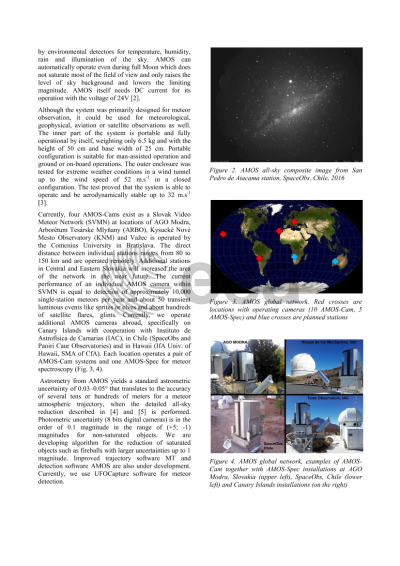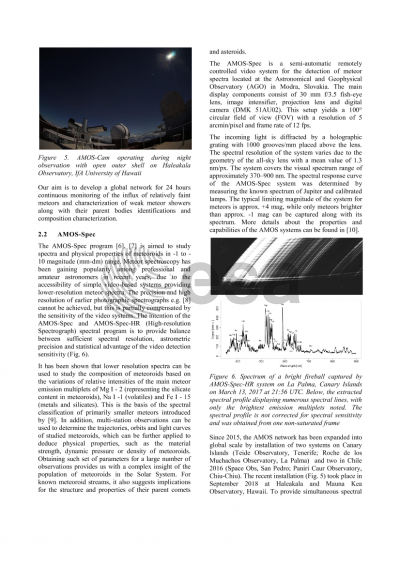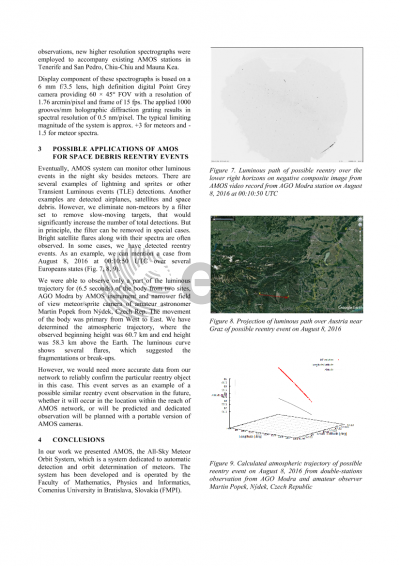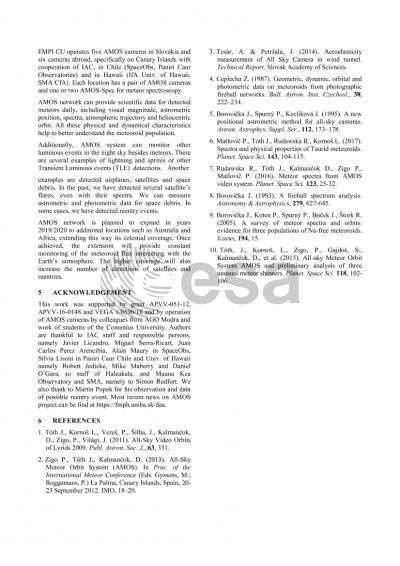Document details

Abstract
AMOS, the Automatic Meteor Orbit System, is a system dedicated to automatic detection and orbit determination of meteors. The system has been developed and is operated by the Faculty of Mathematics, Physics and Informatics, Comenius University in Bratislava, Slovakia (FMPI CU). At current stage, the AMOS system consists of two different parts, the AMOS-Cam and AMOS-Spec. AMOS-Cam is designed for meteor detection and observation, but could be used for meteorological, geophysical, aviation or satellite observations.
The AMOS-Cam cameras systematically monitor meteor activity in the Slovak Video Meteor Network (SVMN) at four locations. There are six cameras abroad installed at two locations in Canary Islands, two locations in Chile and two locations in Hawaii. The network is about to be expanded for more stations in central and eastern Slovakia, as well in south Africa and Australia. The operation of cameras is semi-automatic and needs electric power and internet connection. The AMOS-Cam system is also available in a portable configuration, and can be quickly relocated to any desired destination for a given meteor shower campaign or be a part of an airborne mission.
The AMOS-Spec is a semi-automatic remotely controlled video system for the detection of meteor spectra. The AMOS-Spec program has been created with the intention of carrying out regular systematic spectroscopic observations. At the same time, the meteoroid trajectory and pre-atmospheric orbit are independently measured from data collected by the AMOS-Cam network. This, together with spectral information, allows us to find the link between the meteoroid and its parent body, from both dynamical and physical characteristics. Five AMOS-Spec systems have been deployed so far; one in Slovakia, one at Canary Islands, two in Chile and one at Mauna Kea, Hawaii.
We are going to present technical characteristics of AMOS-Cam and AMOS-Spec systems. We will discuss systems’ processing routines, output data products and scientific outputs. The AMOS wide field of view and its global network also accidentally allows us to detect space debris atmospheric reentry events. An example of such an event will be presented.
Preview






